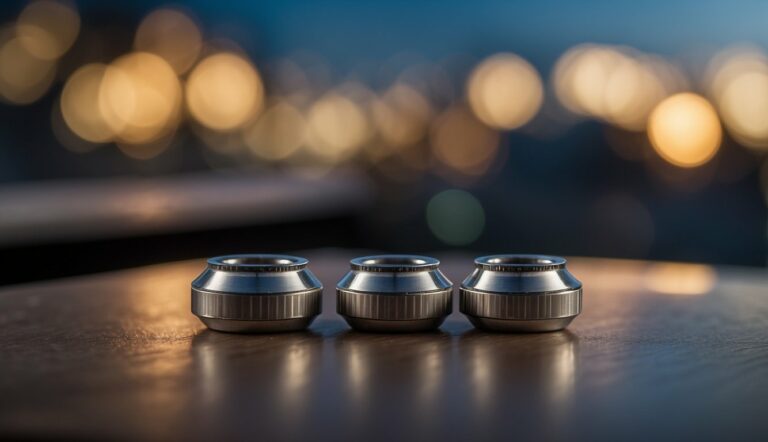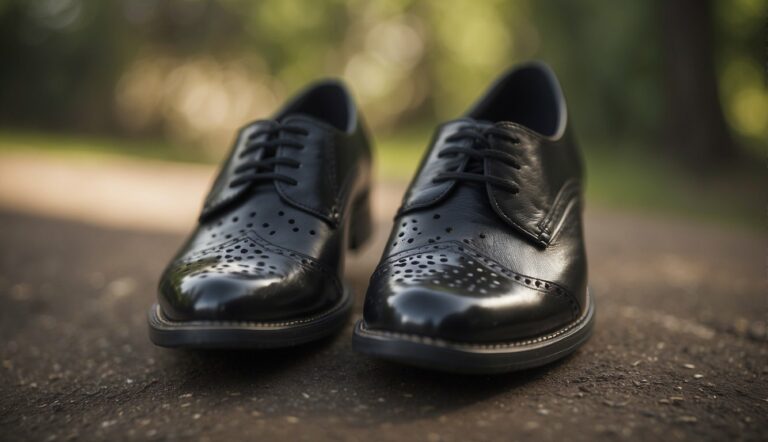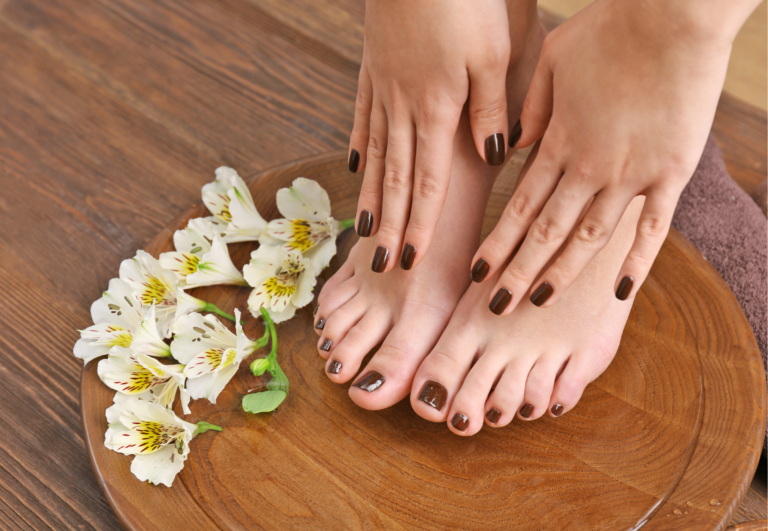How to Select Toe Spacers for Sensitive Skin: A Guide to Comfortable Fit and Material Choices
Selecting toe spacers for sensitive skin requires thoughtful consideration to ensure comfort and avoid irritation. As someone with experience in the use of toe spacers, I understand that the right materials and fit are crucial for those with delicate skin. It’s important to choose toe spacers that are made from hypoallergenic materials, as these are less likely to cause skin reactions.
I’ve found that soft silicone toe spacers are often a preferred choice for sensitive skin due to their flexibility and skin-friendly properties. They should fit snugly, but not so tightly that they cut off circulation or cause discomfort. Always look for toe spacers that can be cleaned easily, as hygiene is vital to prevent skin issues.
When trying toe spacers, my advice is to wear them for short periods initially to ensure they do not cause any adverse reactions on the skin. Comfort is key, so opt for toe spacers that adjust to the contours of your feet, providing support without adding undue pressure between the toes. Remember that individual needs may vary, so what works for one person may not be the best option for another.
How To Select Toe Spacers for Sensitive Skin
Selecting toe spacers for sensitive skin requires careful consideration to avoid irritation or allergic reactions. Here are some guidelines to help you choose the right toe spacers:
- Material: Look for toe spacers made from medical-grade, hypoallergenic materials that are less likely to cause skin reactions. Gel toe spacers are often a good choice as they are soft, flexible, and typically non-irritating. For instance, the Gel Toe Spacers from Medline Industries, Inc. are designed for sensitive skin, being washable and reusable.
- Latex-Free: Ensure that the toe spacers are latex-free, especially if you have a latex allergy. Latex can be a common irritant for people with sensitive skin. Products like the Gel Toe Separators from ZenToes are latex-free and cater to those with allergies.
- Skin-Safe Adhesives: If the toe spacers you’re considering have adhesive components, make sure they are skin-safe and hypoallergenic. Adhesives can sometimes cause skin irritation.
- Non-Toxic: Verify that the toe spacers are made with non-toxic materials. This is especially important for products that will be in contact with your skin for extended periods.
- Softness and Comfort: Choose toe spacers that are soft and comfortable to wear. Rigid materials can cause pressure points and discomfort, particularly for those with sensitive skin.
- Washable and Reusable: Opt for toe spacers that can be easily washed and reused. This ensures that you can maintain hygiene without causing deterioration of the material, which could otherwise lead to skin irritation.
- Size and Fit: Make sure to select the correct size for your toes to avoid excess pressure or friction, which can be problematic for sensitive skin. Some toe spacers come in multiple sizes or are adjustable to ensure a proper fit.
- Consult Reviews: Look at reviews from other users who have sensitive skin to see if they have had a positive experience with the toe spacers you are considering.
- Patch Test: If possible, do a patch test with the material of the toe spacers to ensure that you do not have an allergic reaction before using them for an extended period.
When considering toe spacers for sensitive skin, it’s crucial to understand your specific foot conditions and seek advice from a healthcare professional. This ensures proper care and selection of suitable toe spacers that address your needs.

Assessing Foot Conditions
Identifying foot issues is the first step in finding the right toe spacers. Observe any pain, discomfort, or visual changes in your feet, particularly focusing on common problems such as:
- Bunions: Protruding at the base of the big toe, causing misalignment.
- Hammertoe: A condition where toes are bent at the middle joint.
- Overlapping Toes: Toes that lay over or under adjacent ones.
- Plantar Fasciitis: Heel pain due to inflammation of the plantar fascia.
If your big toe is forced into a cramped space, it may lead to bunions. Overlapping toes or hammertoe can be a consequence of tight, poorly fitted shoes. Noting these conditions is important for choosing the most effective toe spacers.
Consulting with a Podiatrist
While I’m knowledgeable about toe spacers, it’s important to consult with a podiatrist to verify your foot conditions. A podiatrist can:
- Diagnose specific foot problems.
- Recommend toe spacers that accommodate sensitive skin.
- Provide guidelines on proper usage for relief.
Remember, a podiatrist’s expertise is invaluable, especially for persistent foot pain or complex foot problems. They’ll help to ensure that any toe spacer choice complements a comprehensive approach to foot health.
Selecting the Right Material
When selecting toe spacers for sensitive skin, it’s essential to choose materials that minimize the risk of irritation and ensure hygiene.
Comparing Spacer Materials
Toe spacers come in various materials, with silicone, gel, and foam being the most common. I recommend silicone toe spacers for sensitive skin due to their hypoallergenic properties.
Silicone: Medical-grade silicone is particularly suitable as it’s less likely to cause skin irritation. It’s durable, easy to clean, and maintains its shape over time, making it a good investment for long-term use. Here’s a quick comparison:
| Material | Comfort | Hygiene | Durability | Skin-Friendly |
|---|---|---|---|---|
| Silicone | High | High | High | Excellent |
| Gel | Medium | Medium | Medium | Good |
| Foam | Low | Low | Low | Fair |
Choose pliable materials that adapt to your foot’s shape for additional comfort.
Allergies and Skin Sensitivity
If you have skin that’s prone to allergies or irritation, it’s paramount to select spacers that are non-reactive. Medical-grade silicone is the safest bet, as it’s specifically designed to reduce negative skin reactions. Always check the product description to ensure the silicone toe spacers are labeled as medical-grade.
When considering hygiene, silicone is non-porous, which helps prevent bacterial growth and makes them easy to sterilize. For me, it’s a top choice as it blends comfort with practical maintenance, ideal for sensitive skin that requires extra care.
The Importance of Proper Sizing
Selecting toe spacers for individuals with sensitive skin begins with understanding that proper sizing is essential to ensure balance, maintain foot health, and avoid the complications that can arise from tight footwear.
Measuring Your Toes
To find the correct size, first measure the width of each space between your toes. It’s straightforward: use a soft tape measure to record the distance from one toe to the next. Ensure the tape measure is snug but not tight, as even a small misreading can lead to discomfort.
Finding the Correct Fit
Once you have the measurements, compare them to sizing charts provided by toe spacer manufacturers. A correctly sized toe spacer should:
- Fit comfortably between the toes without pinching
- Not be so loose that it slips out
- Allow for proper balance and alignment when wearing everyday footwear
Remember, the goal is not to stretch your toes uncomfortably, but to support and maintain their natural position for optimal foot health.
Maintaining Toe Spacer Hygiene
To ensure the longevity and effectiveness of toe spacers, especially for those with sensitive skin, it’s crucial to maintain proper hygiene. A consistent cleaning routine and proper storage are key to preventing irritation or infection.
Cleaning and Care
- Frequency: Clean toe spacers after each use to remove any bacteria or fungi.
- Materials: Use a gentle, non-abrasive soap and warm water. For sensitive skin, avoid harsh chemicals.
- Method:
- Rinse toe spacers under warm water to wash away any debris.
- Lather with a hypoallergenic soap.
- Rinse thoroughly, ensuring no residue remains.
- Air dry completely before next use.
Storage Solutions
- Environment: Store toe spacers in a clean, dry place.
Containers: Use a breathable pouch or container with the following characteristics:
- Precautions: Do not store toe spacers in a sealed container while damp, as this can encourage bacterial growth.
- Material: Soft fabric or ventilated plastic.
- Closure: Zipper or secure lid to prevent dust and contaminants.
Incorporating Toe Spacers into Your Routine
Integrating toe spacers into your daily routine is straightforward. Remember, consistency is key to feeling the benefits, whether you’re seated at your desk or active throughout the day.
Daily Use and Exercises
I recommend starting with a moderate approach to using toe spacers if you have sensitive skin. Begin by wearing them for short periods each day to acclimate your skin and toes to the sensation.
For sedentary activities:
- Sitting at a desk: Start with 5-10 minutes of wear and increase gradually.
- Watching TV: Use this time to let your toes adapt to the spacers.
- Walking: Wear toe spacers for a few minutes during a walk to promote strength.
Enhancing Mobility and Recovery
Toe spacers can be an excellent tool for improving mobility and aiding recovery after activities like running.
- Toe splay: Gently spread your toes with the spacers in place to warm up.
- Towel scrunches: These can be done with toe spacers to increase toe mobility.
Post-run recovery:
- After running, slip on your spacers to allow your toes to rest and recover in alignment.
- Combine with gentle foot massages to enhance the benefits and soothe sensitive skin.
Overview of Toe Spacers
Toe spacers are devices designed to realign and maintain proper toe spacing, often made from materials like silicone or gel. Suitable for individuals with sensitive skin, they are typically hypoallergenic and non-irritating.
Benefits of Toe Spacers
Toe spacers offer various benefits to users, notably:
- Foot Conditions: Can provide relief for conditions like bunions, hammertoes, and plantar fasciitis.
- Realign Toes: Assist in the realignment of toes to their natural position.
- Prevent Overlap: Help in the prevention of toe overlapping, which can lead to further discomfort or foot issues.
Types of Toe Spacers
Toe spacers come in various types, each suited for specific needs or preferences:
- Silicone Toe Spacers: These are soft, flexible, and comfortable, ideal for daily wear and sensitive skin.
- Gel Toe Spacers: Similar to silicone, gel spacers provide cushioning and fit snugly between toes.
- Foam Toe Spacers: Typically softer and less durable, better suited for temporary use.
When selecting toe spacers for sensitive skin, the usual recommendations include opting for hypoallergenic materials such as medical-grade silicone or gel, as they are less likely to cause irritation.





